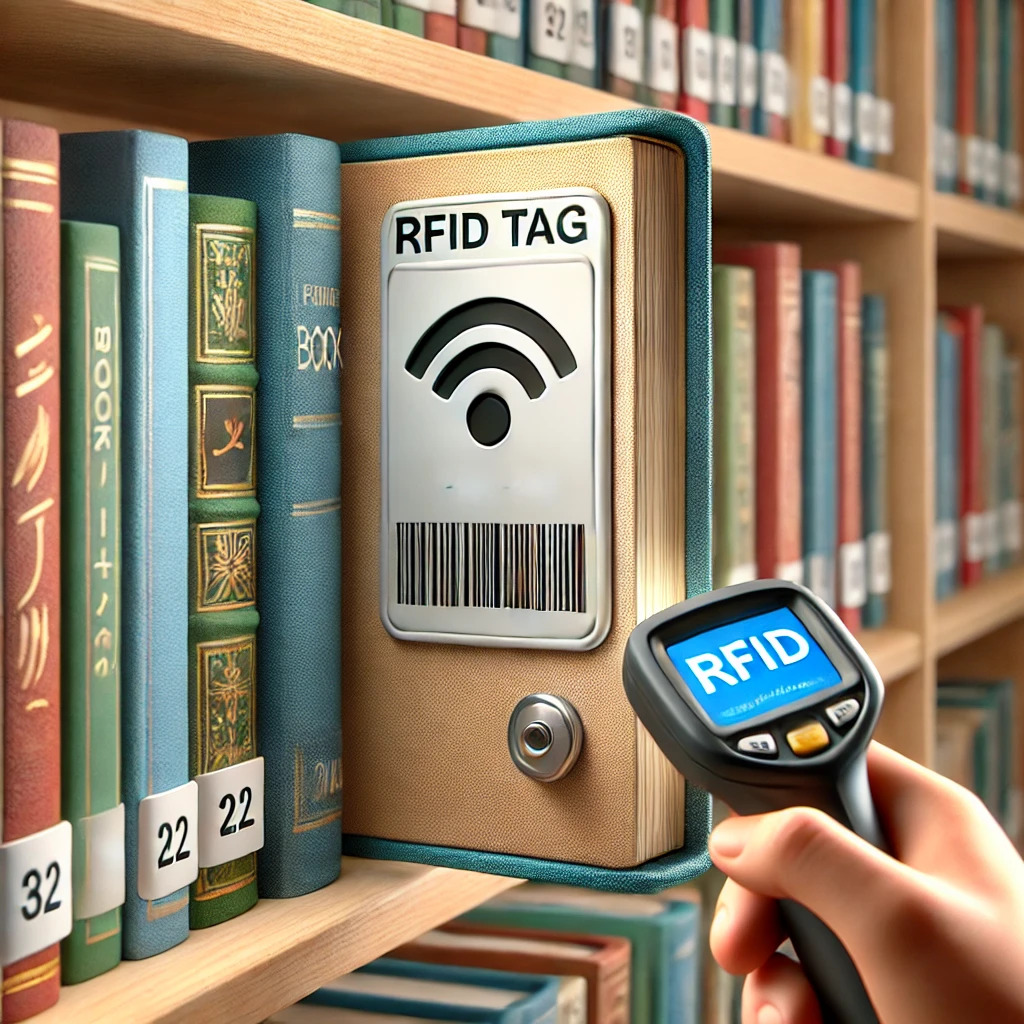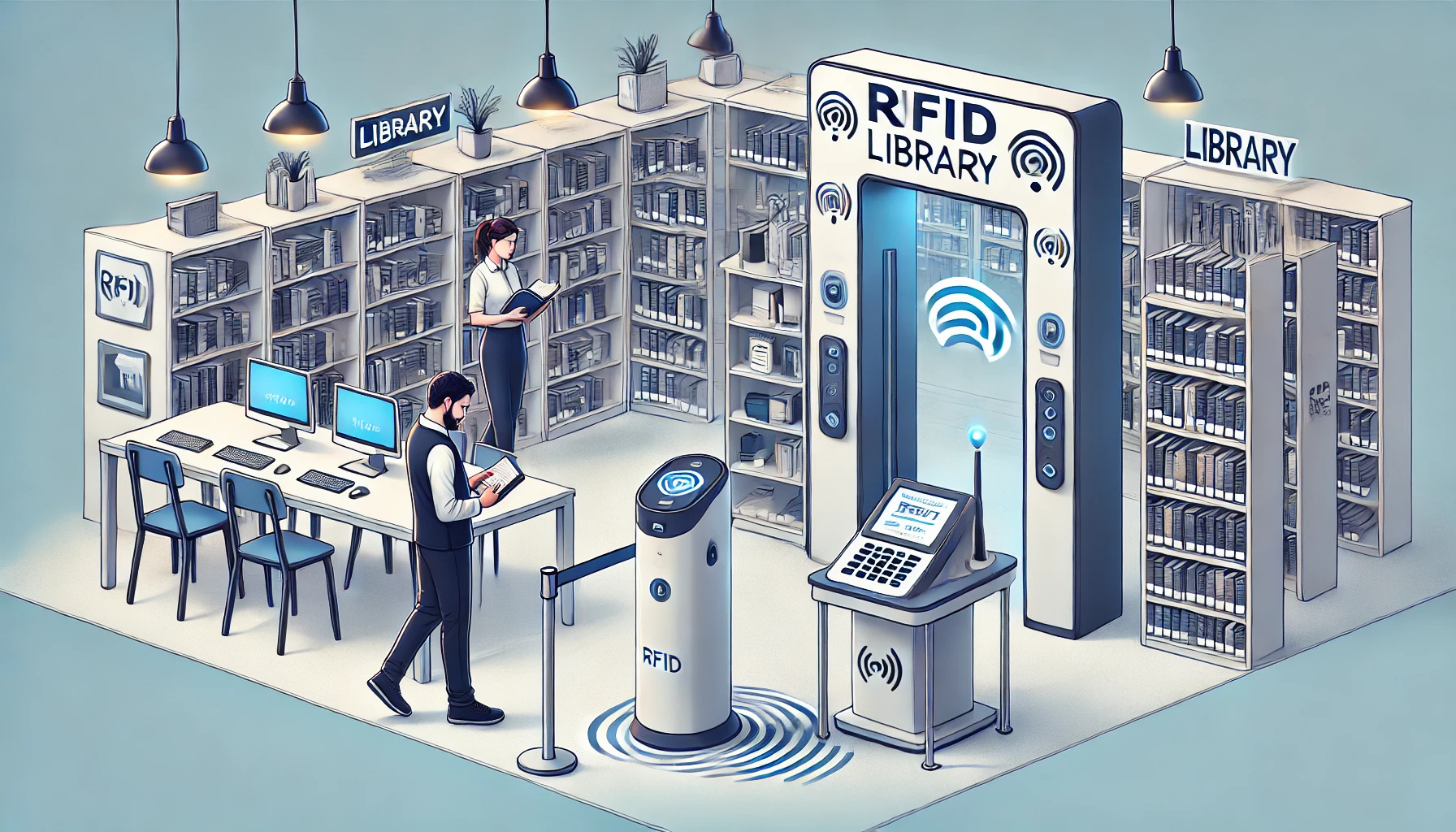A Radio Frequency Identification (RFID) system is a perfect investment for libraries. It offers significant benefits in item security, circulation, collection management, and other areas, making libraries run smoother. In this article, we’d like to explain how it works and its parts.
Specifically, every library often has the following main parts to enable their RFID system to work:
RFID tag is a paper-thin electronic device adhesive with a microchip containing unique identification data about the item, such as the title, author, barcode number, etc. It is the essential tool of the RFID system affixed to library materials (e.g., books, DVDs), used in conjunction with RFID readers to track an item’s status when it is activated by RFID antennas.
2. RFID Reader and Antenna
RFID antennas are the components of RFID readers that emit radio waves to activate the tags and receive their signals, then facilitate readers to communicate with tags to read or write item’s data, and finally send the data information to the library management system. RFID readers are usually installed on specific hardware, such as security gates, self-check stations, handheld wands, return slots, etc. to help them sync with the library management system.
3. LMS / ILS
The library management system (LMS), also known as the integrated library system (ILS), is a software platform to manage library operations and services. Its integration with RFID hardware for cataloging, circulation, patron management, tracking library resources, as well as reporting and analytics. It is the backbone of modern libraries, enabling better user experience and library service.
4. Middleware
Middleware is a software layer that acts as a bridge between RFID hardware and LMS. It plays a vital role in ensuring that data from RFID hardware is accurately captured, processed, and transmitted to the LMS, enabling libraries to automate operations, improve efficiency, and enhance the patron experience. Without middleware, the operation of the RFID system can not be realized.
5. Database
A database is a centralized repository that stores all library data, including item records, patron information, and transaction history. It works with the LMS to maintain accurate records and support RFID operations.
6. Networking
Networking ensures that all parts of the RFID system can communicate with each other.
By integrating the above parts, the RFID system can work smoothly in libraries to provide an improved library operation and create a better patron experience.
Previous:Impact of Smart Lockers on Library Outreach and Engagement
Next:Digitale Whiteboards VS Other Electronic Interaction Methods

